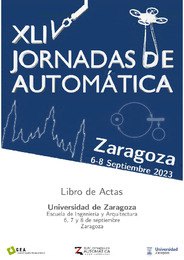Por favor, use este identificador para citar o enlazar este ítem:
https://hdl.handle.net/11000/31586
Análisis comparativo de técnicas de segmentación de estructuras reticulares
Título :
Análisis comparativo de técnicas de segmentación de estructuras reticulares |
Autor :
Soler, F. J.
Peidro, Adrian 
Fabregat Jaén, Marc
Paya, Luis 
Reinoso, Oscar  |
Editor :
UNIVERSIDAD DE ZARAGOZA ESCUELA DE INGENIERÍA Y ARQUITECTURA |
Departamento:
Departamentos de la UMH::Ingeniería de Sistemas y Automática |
Fecha de publicación:
2023-09 |
URI :
https://hdl.handle.net/11000/31586 |
Resumen :
This article aims to compare our previous work on segmentation of reticular structures with neural networks against an ad
hoc algorithm for the same purpose. Nowadays neural networks or artificial intelligence are widely used concepts synonymous
with advances and improvements, but in certain cases it is possible to use more classical techniques, outside the paradigm of
artificial intelligence to achieve the same type of tasks with similar results. To corroborate last mention, in this article we perform a
quantitative and qualitative comparative analysis between an ad hoc algorithm and the best neural network model in our latest work
for segmenting reticular structures. Conventional methods such as Random Sample Consensus (RANSAC) and region growing are
used to implement the algorithm. Standardised metrics such as precision, recall and f1-score are used for quantitative comparison.
The latter will be calculated on a proprietary dataset, consisting of a thousand point clouds automatically generated in previous
work. The algorithm in question is designed specifically for such a database
|
Palabras clave/Materias:
Region Growing
RANSAC
Plane Segmentation
Neural Networks
Point Clouds
Climbing Robots |
Área de conocimiento :
CDU: Ciencias aplicadas: Ingeniería. Tecnología |
Tipo documento :
application/pdf |
Derechos de acceso:
info:eu-repo/semantics/openAccess
Attribution-NonCommercial-NoDerivatives 4.0 Internacional |
DOI :
https://doi.org/10.17979/spudc.9788497498609 |
Aparece en las colecciones:
Ponencias y Comunicaciones - Ing. Electrónica y Sistemas Automáticos
|
 La licencia se describe como: Atribución-NonComercial-NoDerivada 4.0 Internacional.
La licencia se describe como: Atribución-NonComercial-NoDerivada 4.0 Internacional.
 La licencia se describe como: Atribución-NonComercial-NoDerivada 4.0 Internacional.
La licencia se describe como: Atribución-NonComercial-NoDerivada 4.0 Internacional.
.png)
